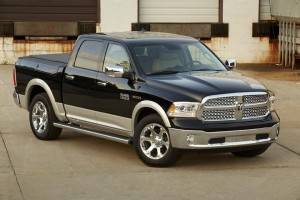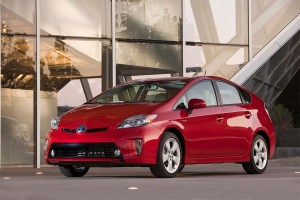Luxury and Japanese brands dominate as Consumer Reports lists its top vehicle list for 2014 – but there were a few models among the influential magazine’s picks, including the first Chrysler to make the grade in 16 years.
But domestic brands Ford and Chrysler took some hits in the annual list of top picks, Ford and Cadillac hammered for problems with their glitch-plagued infotainment systems. Caddy dropped six spots in the 2014 rankings, landing in the bottom five, the worst of any General Motors brand.
On the other hand, Toyota’s high-line Lexus brand was the top pick this year – repeating its performance in 2013. It was followed by Honda’s upscale Acura and German luxury maker Audi. But a relative newcomer to the industry showed up its more established rivals, the Tesla Model S being named Best Overall vehicle. Consumer Reports editors cited the battery-electric sedan’s “exceptional performance,” as well as its “many impressive technological innovations.”
(Frustrated by long-running problems with its Sync system, Ford to switch from Microsoft to BlackBerry. Click Here for the story.)
While it might seem natural for luxury cars to take the lead in the Consumer Reports 2014 Top Picks, editors said the opposite is true considering the complexity of products like the Tesla Model S and Lexus LS sedan.
“A lot can go wrong when building cars packed with luxury features,” said Jake Fisher, director of Consumer Reports automotive testing. “It’s impressive to have three luxury brands score top marks when reliability is one of the defining factors.”
(Click Here to check out some of the world’s oddest driving laws.)
The magazine considers a variety of factors in making its picks – primary categories are reliability, crash performance and road tests, the latter considering such things as handling and ride comfort. And the latter point apparently played well for Chrysler’s latest full-size truck, the Ram 1500 named best Pickup, the first time one of the Detroit maker’s models has landed on the list since 1998.
The last model that scored for Chrysler was the 1998 Jeep Cherokee – but this year, Jeep tied with Ford as the lowest-ranked brands on the 2014 Consumer Reports list. Dodge and Chevrolet were also in the bottom five with the rest of the domestic brands ranking roughly mid-pack.
Koreans Hyundai and Kia also lagged towards the lower half of the chart. The Hyundai Santa Fe, however, was named tops in its Midsize SUV category.
Japanese brands have nabbed seven of 10 spots on the Consumer Reports list since 1997, though this year, they grabbed only five spots – their lowest performance ever.
“The competition has grown fierce” in the automotive industry, according to CR’s auto editor Rik Paul.
That was demonstrated by the fact that eight different brands placed cars in the list of Top 10 models. Only Honda and Subaru won with two models each. In fact, the Subaru Forester toppled the traditional Compact SUV favorite, the Honda CR-V.
The 2014 Top Pick list includes a number of perennial favorites, including the Audi A6 and the BMW 328i, each repeating for a second consecutive year. But for staying power, no model matched the Toyota Prius, named Consumer Reports’ Top Green Car for the 11th year in a row.
(Senior drivers aren’t the risk may claim, says new study. Click Here for the story.)



CR’s bias in favor off Japanese/Korean/European vehicles over vehicles manufactured by US automakers is very well known. During my 35 years with GM I was often very puzzled about their savaging of not just GM cars and trucks but those products of Ford and Chrysler as well while at the same time praising to the heavens some of the worst examples of Japanese, Korean and European cars and trucks ever to hit America’s shores. On the surface, CR’s criteria standards for evaluating cars and trucks seems to be rational and fair. However, in purportedly following these guidelines, those doing the critiques are often less than ingenuous. Going back a few years, I we’ll remember the introduction of Chevrolet’s Citation which was GM’s first attempt at a domestically produced front wheel drive car for the mass market. (The Toronado and Eldorodo were strictly niche market vehicles) Now, the Citation was not a wonderful car but it was priced right and for the most part, those who purchased them (lots and lots of them!) we’re satisfied with the reliability and service they gave over their lifetime. I can tell you from personal experience that they were more rugged than one might imagine and we’re excellent in snow and on wet highways. Anyway, when it came time for CR to review the Citation they did their usual non-import hatchet job. Of course, fit and finish we’re severely criticized as though those items were paramount in determining whether or not a car would provide the customer with reliable utility and performance. As I recall, there were several other deficiencies’ some justified, others not that CR deemed adequate reasons for consumers to avoid this car like the plague. The one thing that really stood out for me though was the damning of the fact that on Citations with standard transmissions, the clutch had to be depressed before the engine could be started. This was not viewed as the great safety feature it was but rather as a significant deficiency. It was this scurrilous review of a vehicle that I had personal, hands-on, positive experience with that finally convinced me to not renew my subscription to. Consumer Reports.